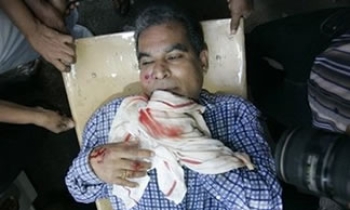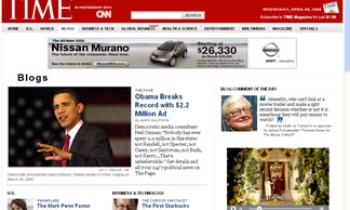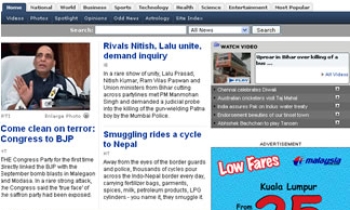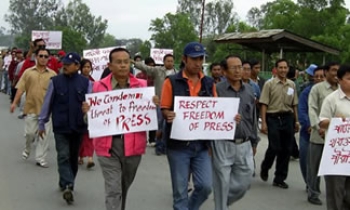New Delhi, Oct 30 (IANS) India could review the 26-percent foreign equity cap in news and current affairs publications if stakeholders take a collective view on the matter, Information and Broadcasting Minister Priyaranjan Dasmunsi said in an important declaration of intent Monday.
'Let the industry decide and get back to me. We will then review the policy. We have an open mind,' Dasmunsi told a seminar on the future of magazines at the two-day Indian Magazine Congress here, referring to both criticism and support over the issue of foreign equity caps.
'Why do you want me to be your enemy? You decide,' he said adding that he knows why the foreign publications are interested in entering the Indian market. 'The temptation of the market here is too strong.'
India presently allows 100 percent foreign equity - including those by portfolio funds and foreign institutional investors - in non-news and non-current affairs journals but limits it to 26 percent in news and current affairs publications.
The minister, who was a journalist himself before entering politics, said he believed that print media had a great future in the country. 'India is today the biggest media market in the world perhaps after China,' he said.
In support of his arguments, he spelt out some statistics. He said despite the growth in the reach of satellite TV channels at 34-40 percent per annum, the reach of the print media was growing.
'The print media's reach has increased from 179 million in 2003 to 222 million in 2006. Magazines are one of the fastest-growing segments in print media, with 4,000 magazines in English alone with a readership of 100 million,' he said.
Dasmunsi said magazines have kept the old-age traditional habits of reading in both rural and urban India alive.
'An interesting fact I noticed in the National Readership Survey, 2005, is while the reach of the press has fallen in urban India in the last three years from 48 percent to 46 percent, it has grown in rural India - 17 percent to 19 percent.'
He said the number of newspapers and magazines in rural India were almost equal to those in urban areas. 'As a result, of the total of 200 million readers in the country in 2005, as many as 98 million are from rural India.'
Dasmunsi said the trend also suggested a proliferation of niche journals - where 100 percent foreign equity is permitted - in areas like travel, tourism, heritage, popular science, regional literature and health.
'We have approved 78 titles till August last. Many more applications are under process. With further liberalisation, especially 100 percent equity in special interest publications, we expect foreign investments in this segment to grow.'
According to the minister, the advertising market in India has also grown with the share of print media growing at 15 percent per annum, which, he said, would ensure the financial health of magazines.
'But some unpleasant aspects have to be measured before they assume threatening dimensions. As I see, private media houses use the business model of advertising to sustain the costs of the media product,' he observed.
'This has over time led to corporate influence - or, may I say, interference on content - and consequently, affected media freedom. The clear mission ascribed to media to report the truth appears to have been blurred by corporate pressure.'
In a democracy like, India such an influence may negate the need for an objective assessment of issues, the minister said, adding: 'Media, as we can easily perceive, is a means for corporates to become more powerful within the system.'









